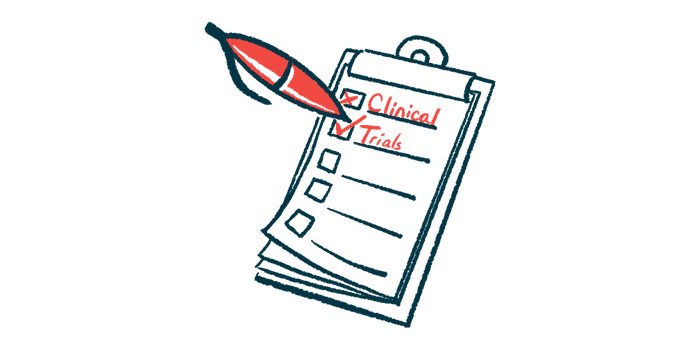Imdusiran combos lead to functional cure in some cases of hepatitis B
Two patients who achieved cure received no IFNs, standard first-line treatment

The investigational treatment imdusiran used as part of combination therapy regimens has led to a functional cure for eight people with chronic hepatitis B in clinical trials, according to an update from its developer Arbutus Biopharma.
A functional cure means the hepatitis B virus (HBV), which causes the disease, was suppressed to where antiviral treatments could be discontinued. Two of the patients received no interferons (IFNs), the standard first-line treatment, as part of the imdusiran combination.
“To date, eight patients have reached functional cure following imdusiran combination therapy,” Lindsay Androski, president and CEO of Arbutus, said in a company press release. “This type of functional cure data, in patients who successfully discontinued all [chronic HBV] treatments … is an exciting milestone for Arbutus, clinicians, and patients.”
The findings — which follow positive interim data from the studies presented last year — were discussed in a series of poster presentations at the European Association for the Study of the Liver Congress this month in Amsterdam and virtually.
Treating chronic hepatitis B, where liver inflammation arises due to persistent HBV infection, typically consists of IFNs to boost the immune system’s ability to fight the virus and antiviral medications called nucleos(t)ide analogues (NAs) that stop it from replicating. This can help prevent serious liver damage, but rarely leads to a functional cure.
What is imdusiran?
Imdusiran uses an approach called RNA interference to suppress HBV replication and production of viral proteins, including one called HBsAg that’s important for the virus’ ability to infect human cells. It’s given via injections under the skin and targeted to the liver.
Arbutus believes, when combined with other treatments, imdusiran will help achieve the three goals necessary for reaching a functional cure: lowering HBsAg levels, suppressing HBV DNA, and boosting immune responses against the virus. That idea was tested in two Phase 2a studies involving people with chronic hepatitis B who are on stable NA therapy — IM-PROVE I (NCT04980482) and IM-PROVE II (ACTRN12622000317796).
Achieving a functional cure
IM-PROVE 1 is testing imdusiran in combination with a standard IFN therapy that’s sold as Pegasys. Its 43 participants received imdusiran injections every eight weeks plus NA therapy for six months, and then were randomly assigned to receive NA and three or six months of IFN, with or without more imdusiran doses. The patients were then monitored on NA alone for six months to assess their ability to stop such treatment.
Previous data showed six months of IFN along with imdusiran led to the highest rates of undetectable HBsAg, and that around half of all participants could stop NA therapy.
Arbutus now reports that, to date, six people have achieved a functional cure — where HBV and HBsAg levels were undetectable for at least six months without any treatment — five of whom received six months of IFN.
In one poster, scientists showed that five of the six people who achieved a functional cure had blood HBsAg levels below 1,000 international units (IU)/mL at the study’s start, a characteristic that’s common in the chronic hepatitis B population, according to Arbutus.
A second poster demonstrated that most functionally cured patients exhibited a similar pattern of response characterized by HBsAg declines followed by signs of immune activation that preceded the development of antibodies against HBsAg, called seroconversion.
IM-PROVE II is testing imdusiran plus VTP-300, an investigational vaccine from Barinthus Biotherapeutics that’s designed to boost the immune system’s ability to target HBsAg.
All 62 participants received imdusiran, injected every eight weeks for six months, followed by a six-month course of either VTP-300, VTP-300 with a low dose of nivolumab (an immunotherapy already used in cancer), or a placebo. They were then evaluated for their ability to stop NA therapy.
In a third poster, researchers shared that imdusiran led to reductions in HBsAg levels across treatment regimens. The nivolumab regimen was well tolerated and two people in that group (15.3%) achieved a functional cure, both of whom had baseline HBsAg levels below 1,000 IU/mL.
More people given imdusiran plus VTP-300 than those on imdusiran plus placebo were able to stop NA therapy, even without achieving a functional cure.
Overall, eight people achieved a functional cure with imdusiran-based combination therapies, two without IFN. Also, all but one had HBsAg levels below 1,000 IU/mL at baseline.
The participants who complete imdusiran trials and remain off NA therapy are being followed in a long-term follow-up study (NCT06277037) to assess the durability of their response.
In a fourth poster, Arbutus presented data from a Phase 1 trial (NCT05960240) that’s testing AB-101, its investigational oral therapy designed to boost the immune system’s ability to target HBV by suppressing the PD-L1 protein. Results showed daily AB-101 was well tolerated and appeared to strongly bind to its intended target among healthy people and those with chronic hepatitis B.







